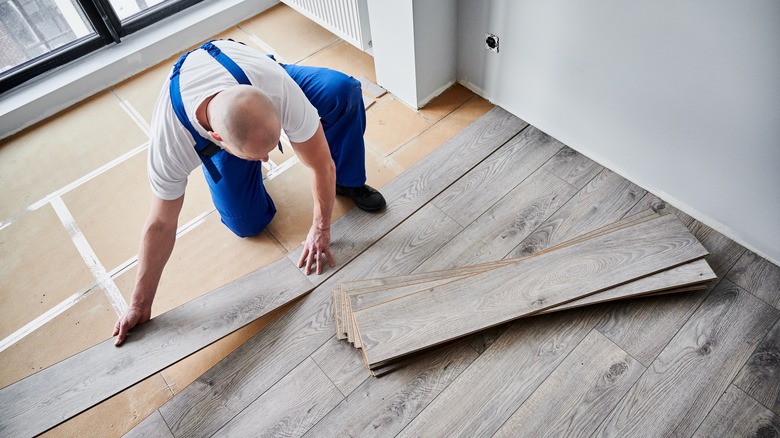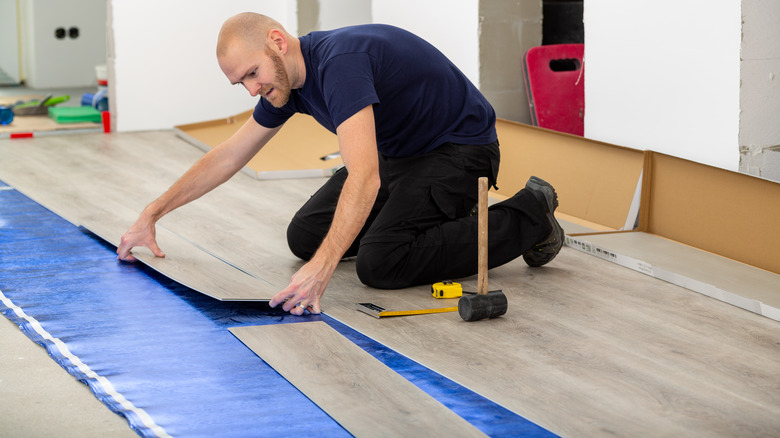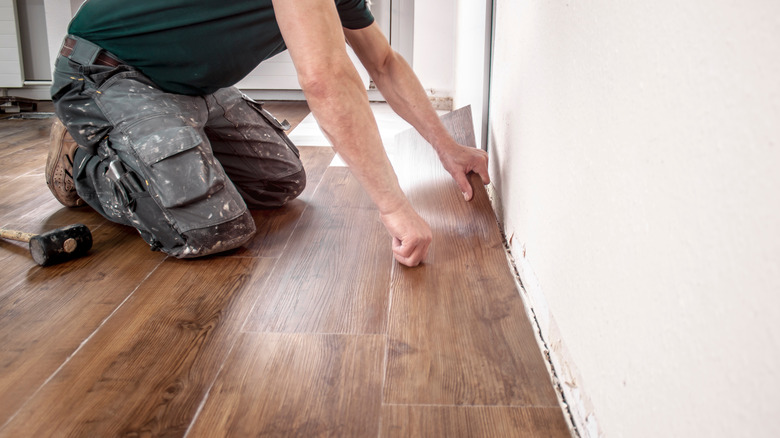Do You Really Need Underlayment For Vinyl Flooring?
Two of the biggest benefits of vinyl flooring are that it's easy to DIY and that its installation is minimal fuss. That's because the planks create something called a "floating floor," meaning you don't have to use nails, staples, or glue to hold it down in place. Instead, each plank has a small lip on its side that is used to interlock with the plank next to it, creating a clasp together, keeping them in place. Because it's so simple to install, you might feel tempted to skip the flooring underlayment, making it even easier to prep. But is that a good idea? The answer is complicated.
You don't technically need underlayment, so skipping it can save you time, money, and labor. But there are certain scenarios where it would be a good idea to take the extra effort and install it. For those who are new to home remodeling, the underlayment is the layer between the original flooring and the new vinyl planks. It's a helpful base layer in a few scenarios. For example, it can soften the flooring if your planks are thin or installed over concrete. It can also help reduce noise if you're installing it in a condo or on the second floor of your house. Here is a closer look into when you should and shouldn't add underlayment.
When to include underlayment with vinyl flooring
If you want a flawless vinyl plank flooring installation, you will want to invest in underlayment. First, you will need it if you're installing your vinyl over concrete, a bare subfloor, or hardwood. There are several reasons for this. First, concrete is very hard with zero give, so adding a subfloor will help make your vinyl feel more cushioned. This will be more forgiving for your feet. Concrete is also very cold, so it will be difficult to walk on the flooring without any slippers come wintertime. The cold will permeate through the stone subfloor and into the vinyl, making it uncomfortable to walk on. An underlayment creates a barrier between that temperature transfer.
Second, it will add more comfort if you're laying planks over a bare subfloor, tiles, or hardwood. It also adds the bonus of increasing soundproofing, so it's extra helpful if you're installing flooring on a second floor, because it will muffle footsteps, kids running, or objects being accidentally dropped. It's advantageous to install it on the first floor too, as it will quiet the sound of footsteps in general. Lastly, it's also necessary to add underlayment if you have uneven, bumpy, or imperfect floors underneath. This will help smooth out the flaws, ensuring that the vinyl planks will be installed on a level surface. If they're not, the floors will either creak or lift.
When you can skip underlayment with vinyl flooring
While there are plenty of scenarios when an underlayment will be necessary, it can sometimes be skipped. For example, if you're laying new vinyl over already existing vinyl floors, you can skip adding an underlayment. That's because the original vinyl flooring already has one installed, so you don't need to double up on it. However, if the original flooring is warped, uneven, or has planks missing, you will want to add the underlayment to smooth out those perfections.
A second scenario where you don't need to include it is if your vinyl boards already have it installed on the bottom. It will look like a thick pad underneath the plank. This padding helps move along the installation process since you don't have to take the time to roll out, tape, and cut the underlayment, but you're still installing one with the boards. However, it never hurts to add more underlayment, especially if you're worried about noise reduction or comfort. You can include an extra layer underneath if you wish.


